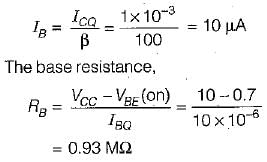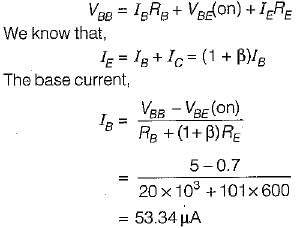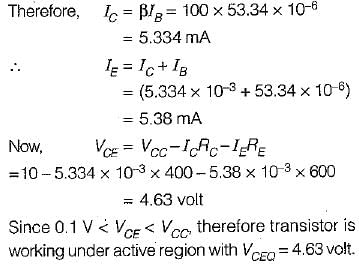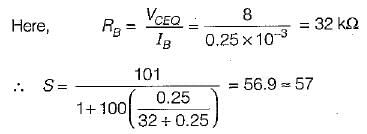Test: Transistor Biasing & Thermal Stabilization - 1 - Electronics and Communication Engineering (ECE) MCQ
10 Questions MCQ Test - Test: Transistor Biasing & Thermal Stabilization - 1
If a change in base current does not change the collector current, the transistor amplifier is said to be
In a BJT, if the collector junction is reverse biased and the emitter junction is reverse - biased, it is said to operate in
On applying a positive voltage signal to the' base of a normally biased n-p-n CE transistor amplifier
Assertion (A): The process of giving proper supply voltages and resistances for obtaining the desired Q-point is called biasing.
Reason (R): In order to produce distortion free output in amplifier circuits, the supply voltages and resistances in the circuit must be suitably chosen.
Match List-I (Transistor parameters) with List-ll (Temperature effect) and select the correct answer using the codes given below the lists:
List-I
A. Base-emitter voltage (VBE)
B. Transistor current gain (β)
C. Reverse saturation current (Ico)
List-ll
1. Independent of temperature
2. Decreases by 2.5 mV per oC
3. Increases with temperature
4. Increase by 7% per oC
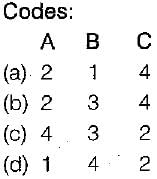
For the transistor circuit shown below, the Q-point values are given as ICQ = 1 mA and VCEQ = 6V
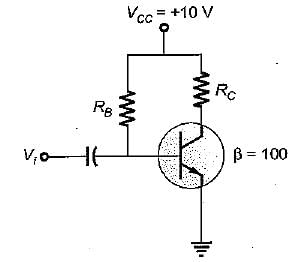
If VBE (on) = 0.7 V, the values of the RB and Rc will be respectively
For the transistor circuit shown below,β = 100 and VBE(on) = 0.7 V.
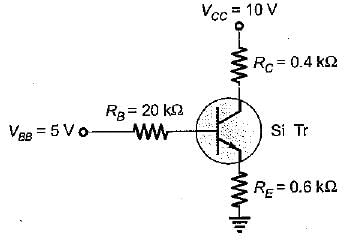
The transistor is working under
In a collector-to-base CE amplifier circuit having Vcc = 12 V, Rc = 250 Ω , IB = 0.25 mA, β = 100 and VCEQ = 8 V, the stability factor will be approximately given by (neglect VBE)
A self-bias circuit (with an emitter resiistor) stabilizes the__________ of the circuit against variations in temperature and process parameters.
In typical circuits, the stabilization factor S = (ΔICICO) is





